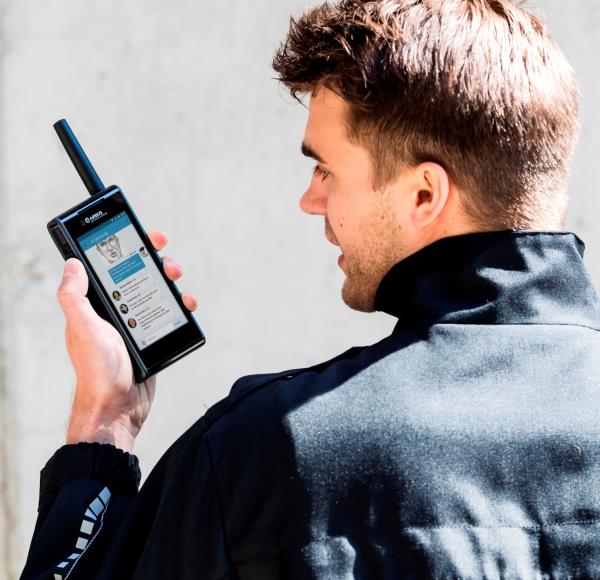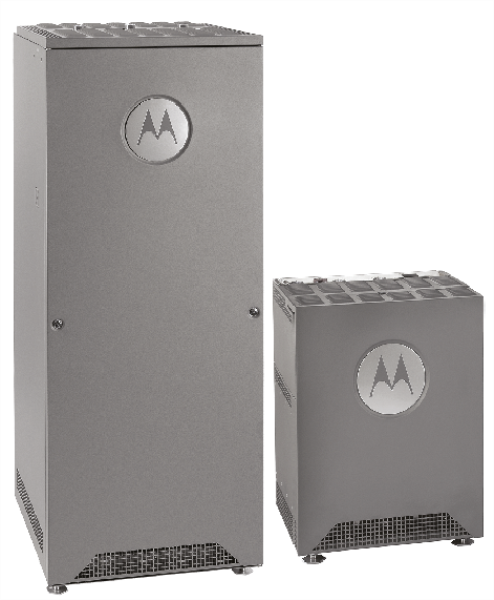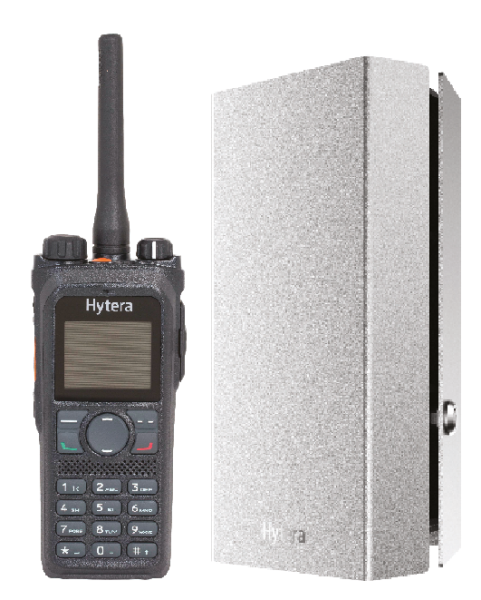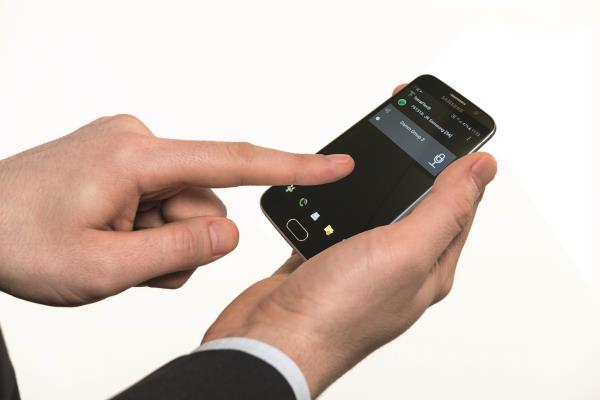09 April 2017

The industry wants mobile broadband services provided to public safety users as soon as possible. Airbus is hoping to accelerate the development of a solution as part of its LTE4PMR project. Photo: Airbus
The worldwide critical communications products market is anticipated to be worth USD18bn by 2019, according to a report published by IHS in 2016. While economic constraints have forced public sector cuts in many countries, its analysts said they are seeing strong growth on a global scale.
The two largest market segments are command and control solutions, and licensed mobile radio (LMR) terminals, which together account for more than two-thirds of critical communications revenue.
Public safety applications continue to make up a major part of the critical communications industry, and IHS estimates that the installed base of public safety and security users make up 43 per cent of the PMR market.
It is this potential that is driving the established critical comms vendors to continually innovate and develop new products.
For example, Motorola Solutions reckons it’s come up with a “one-box” digital radio system that reduces setup time to less than 15 minutes.
DIMETRA Express is an expandable single site TETRA system that integrates base radios and a switch.
Motorola says it was created in response to demand from customers and partners for a product that was easy to deploy and cost effective enough to be used for smaller projects.

Motorola Solutions’ “one-box” DIMETRA Express is an expandable single -site TETRA system that integrates base radios and a switch.
The system is claimed to be lightweight and energy efficient, providing all the voice, SDS and telephony services users require in a small physical footprint.
Motorola says engineering expertise is not required as it can be set up and configured by a Windows or Android laptop or tablet, and is then managed and operated through web-based applications and tools.
It adds that just a single IP address is required which further reduces setup as well as ongoing maintenance costs, making it easier to integrate into an existing IT network.
Hytera unveiled two new products at PMRExpo that took place in Germany last November.
They included the PD985 DMR handset which features single frequency repeater mode. According to the company, this enables the device to use one slot to receive signals and another slot to transmit it in the same frequency in DMO mode to extend communication distance.
It’s also equipped with Bluetooth 4.0 which not only supports audio transmission but also programming, and 3W audio output with Hytera’s new noise cancelling technology.
The PD985 has a protection rating of IP68 to comply with the highest dust and waterproof standards, and Hytera says the radio will continue to function for up to four hours after submersion under water to a depth of up to two metres.
Other features include ‘Smart Battery’. The vendor says this makes it easier to monitor battery life and charging time which is “dramatically” reduced.
There’s also support for 32GB Micro SD cards enabling recording of up to 576 hours of digital/analogue audio.
The DIB-R5 outdoor unit was the second product Hytera launched.
The company says this expands its family of TETRA 2/TEDS base stations with an outdoor version for ACCESSNET-T IP radio systems.
Designed to be very small and space saving, the unit can be fixed, for example, to a wall, radio mast or in a tunnel.
Furthermore, Hytera says the DIB-R5 has low power consumption, enabling deployment in areas with critical electrical power supply.

Left: Hytera’s recently launched PD985 DMR handset features single frequency repeater mode. Right: the DIB-R5 extends the vendor’s range of TETRA 2/TEDS base stations with an outdoor version for ACCESSNET-T IP radio systems.
Earlier this year, France’s Airbus Defence and Space demonstrated what it described as the “future of digital radio”.
It said that in the foreseeable future, authorities will increasingly share photos, videos and other multimedia files with each other for which they require the appropriate technology.
At the European Police Congress held in Berlin in February, Airbus revealed that it had developed a product portfolio that enables multimedia communication in a secure radio network.
Speaking at the time, Markus Kolland, head of sales and programme delivery for Europe and Africa at the company’s Secure Land Communications division, said the most important thing is for TETRA to continue to prevail and be expanded with broadband technology. “Existing and future investments in the radio network will therefore continue to be of value,” he said.
Airbus’ range of broadband products also integrates applications for smart end devices, such as the Tactilon Dabat secure Android smartphone that has a built-in TETRA radio device. This will now feature Stashcat, an encrypted messenger and file-sharing application that supports voice communication.
Airbus claims it is a more secure choice for critical comms users than publicly available messenger applications.
The company developed the app in conjunction with Heinekingmedia, a German-based digital signage and professional secure messaging specialist.
It is one of several companies Airbus is currently working with as part of its new app development programme, SmarTWISP. This aims to create a new application ecosystem that addresses the daily needs of PMR users.
The LTE alternative
Although LTE has been on the critical comms agenda for some time, its market entry has been slow and protracted because of its numerous challenges, such as the cost of spectrum.
However, it is now emerging as a leading candidate for critical communications broadband networks.
In addition, with the recent approval of the mission critical push to talk (MCPTT) voice standard as part of 3GPP Release 13, LTE has also become an attractive substitute for providing LMR-like voice services.
Thomas Lynch, critical communications research director at IHS Technology, says: “End-users from several sectors are already implementing LTE, and some have chosen it over TETRA or DMR. As well as public safety, this is occurring mostly in small and contained networks, often in remote locations, for example, oil and gas platforms and in mining operations.”
IHS projects that this growing trend will have an effect on existing critical communications technologies, especially on LMR terminals and infrastructure. Lynch says the trend has been seen in developing regions such as Africa where it has been easier to ‘leap over’ technology generations rather than set up an LMR infrastructure beforehand.
The TCCA (TETRA and Critical Communications Association) believes it is vital that mobile broadband services are provided to public safety users as soon as possible.
However, it also points out that the inclusion of such functionality does not, by itself, make commercial cellular networks suitable for mission critical operation.
As a result, the TCCA has some significant reservations about the use of commercial mobile broadband networks for public safety applications, and recently issued advice to governments who may be considering LTE for their emergency services networks.
Noel Watermeyer, sales director for Altech Alcom Matoma, says that once the public safety features and functionality are fully standardised, developed by a reasonable number of OEMs, and introduced to market, there is no question that LTE will be a valuable tool.
“Popular belief amongst the international user group is that currently LTE can provide an invaluable overlay, specifically for broadband data (as opposed to voice and data) to complement the more mature narrowband technologies such as TETRA (still the preferred public safety technology in our region), APCO P25, DMR and dPMR, which [all] remain appropriate solutions for 100 per cent of the users.”
To solve the interoperability dilemma, Watermeyer says a number of OEMs have introduced solutions for cross technology communication.
He reckons that because of the standardisation problem, the best solutions are OEM specific: “The trend initially set in Europe of partnering with a specific OEM is therefore set to continue so long as this international situation persists.”
Making it all work together
At the end of January, Airbus announced its LTE4PMR (Long Term Evolution for Professional Mobile Radio) project to develop a full-fledged mission critical broadband solution.
It described this as an “accelerator” in the standardisation, development and implementation of the specific products and features required to meet the public safety sector’s secure communications needs.
Airbus has set up an R&D consortium with French telcos and universities, and says that a “substantial” amount of resources will be invested over a period of 27 months as part of LTE4PMR.
The project solution will offer what the firm says are “typical” PMR features, such as MCPTT, complex data, and video transmissions.
It will also create the base station, core network and terminal chipset enabling the deployment of mobile broadband secure communication networks in various frequency bands.
The final results of LTE4PMR will be presented at the end of 2017. Airbus says they will consist of a “comprehensive and interoperable” set of mission-critical solutions leveraging commercial mobile broadband services as well as dedicated networks in the 400/450MHz and 700MHz frequencies.”
Until then, many PMR specialists continue to develop and launch customised products that use current standards of LTE technology.
For example, France-based ETELM, believes LTE offers “excellent” options for high-speed data and use of mobile applications, and therefore has a “massive future” in the market.
It has developed a range of 4G linked technologies, including TETRA, DMR and analogue base stations, which connect directly to any standard LTE core network without any gateways or specific interfaces.
Late last year, the company unveiled a new eNodeB LTE base station which is claimed to have the longest reach ever developed for PMR 4G technology.
“The e-LBS is a major breakthrough for our 4G linked solution and introduces our own LTE technology to the mission critical sector,” says ETELM sales and marketing director Nicolas Hauswald.
“It will allow operators to boost their coverage areas from existing locations and make seamless calls between subscribers, and give the best of all technologies in a single network.”
He adds that the e-LBS uses LTE’s multi-broadcast features to ensure the widest coverage area, including group calls which are essential to mission critical users. ETELM claims its e-LBS base station has the longest reach ever developed for PMR 4G technology.
ETELM says it has developed a fully integrated approach to avoid, wherever possible, the limitations of the gateway approach.
Hauswald claims the firm’s linked multi-technology solution is the only one in the market that is fully integrated to LTE.
“Our solution implements the LTE protocol stack in every base station, thereby allowing our radio sites to directly and seamlessly connect to the LTE backhaul.
"In the future all operators will use the LTE core network, so having the ability and flexibility to connect onto this industry standard network is important for inter-technology communications.”
Interoperability is key for PMR specialists working with LTE.
For example, Hytera plans to launch its dual mode TETRA/LTE and DMR/LTE devices later this year, including a version with an additional small screen on top of the radio. It says the Android devices will support Wi-Fi, Bluetooth, RFID, GPS, NFC and video, and will work on LTE frequencies.
Motorola Solutions’ already available LEX L10 combines the features of its rugged APX series radios with capabilities more often associated with smartphones.
Jerry Nachmann, the firm’s regional field and solutions marketing manager, believes that while public safety users will always need a fail safe option to communicate by voice (whether using TETRA or other PMR technologies), their ability to share photos and videos is “highly beneficial” to helping solve and prevent crimes.
“Public safety LTE provides additional layers of information that can help in critical situations. If you think of a situation where a terrorist or a criminal is on the loose, command centres could, over an LTE network, push out a picture of the suspect to the LTE devices officers are carrying and help apprehend the suspect with greater ease.” DAMM’s TetraFlex app enables PTT in TETRA groups. It can be run on smartphones that use the Android, iOS and Windows mobile operating systems.
Denmark-based DAMM is likely to agree here. Its TetraFlex client app offers TETRA over LTE and provides coverage extension as well as data capacity for videos and pictures.
It also supports full integration with the company’s TetraFlex radio systems, and enables PTT in TETRA groups, individual calls, messaging, video streaming and GPR tracking.
According to the firm, no radio gateways are required. It adds that the app supports Android, iOS and Windows operating systems, and offers a vendor-independent soft terminal for non-critical voice and data communications through Wi-Fi, UMTS and LTE networks.






